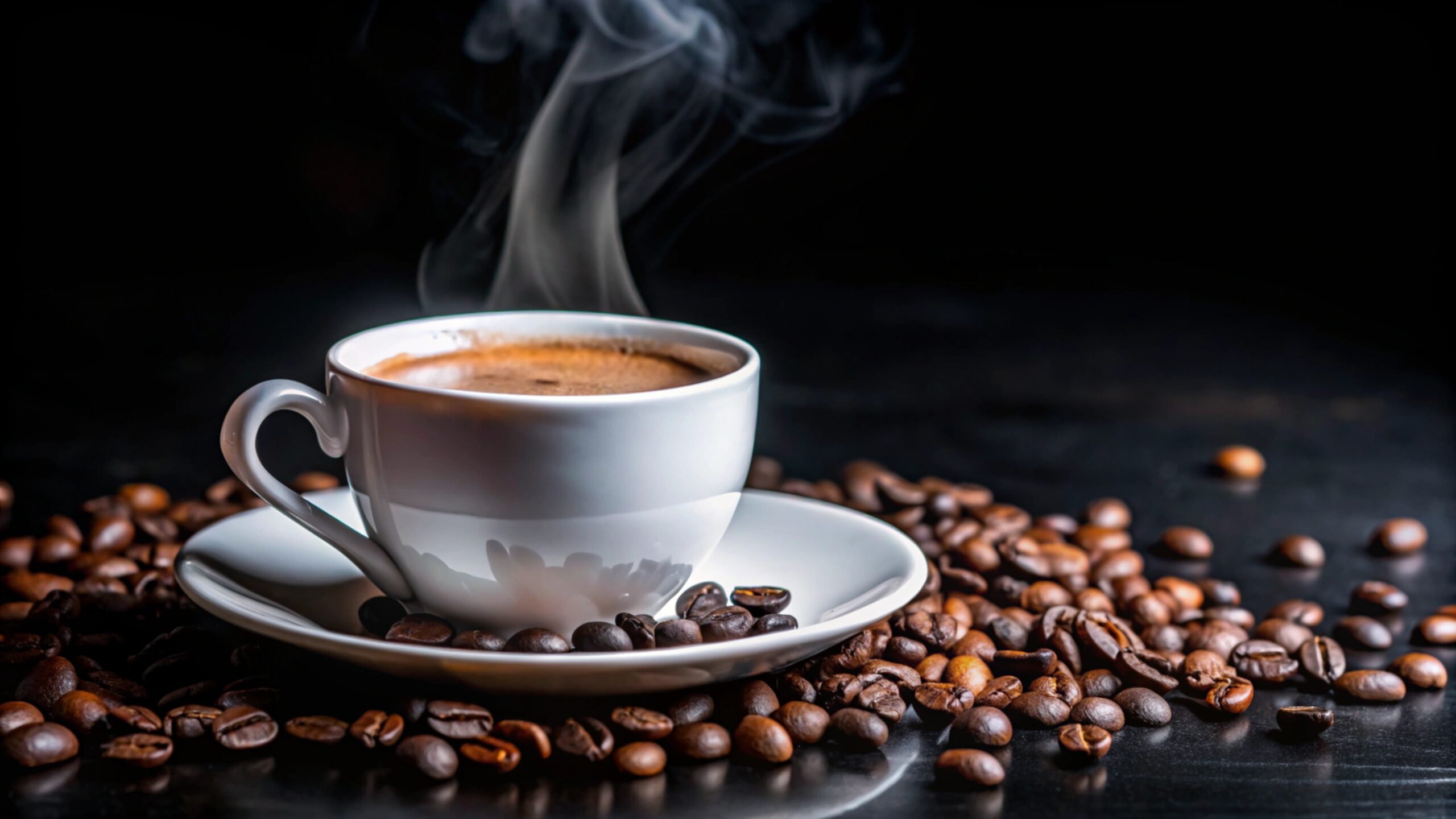Blog
Can You Drink Coffee on GLP-1 Therapy? Caffeine, Cravings, and Weight Loss Explained

Coffee, Comfort, and the Weight Loss Journey
For many women, coffee isn’t just a drink; it gives a soothing experience to face the morning after a sleepless night. It’s often a companion on a stressful workday, and it even gives energy when you are hit by fatigue. For the women struggling with fatigue, caffeine gives the survival fuel.
But if you’re starting GLP-1 therapy, such as Semaglutide or Tirzepatide, one question naturally arises: Can you drink coffee on GLP-1? The short answer is yes, but with balance and awareness. The interaction between GLP-1 and caffeine is less about restriction and more about making smart choices that align with your body’s new rhythm.
At Alternate Health Club, we know weight loss is not about giving up everything you love. It’s about learning how to enjoy life’s comforts in ways that support your health. That’s why we’re breaking down what you need to know about coffee and weight loss medication so you can keep your cup without compromising your progress.
Why Women Struggle With Weight Gain
Weight struggles for women — especially new moms — go beyond calories in and calories out.
- Hormonal shifts postpartum, during PMS, or in perimenopause make weight gain more likely.
- Fatigue leads to carb and caffeine cravings, creating a cycle of quick fixes.
- Emotional eating and drinking become coping mechanisms during stress.
- Time pressures mean skipping meals or grabbing sugary coffee drinks for energy.
Even the best medicine for weight loss can’t erase these challenges. That’s why GLP-1 therapies are paired with lifestyle guidance — and why understanding how coffee fits into your diet for weight loss for female patients matters.
👉 Explore holistic strategies: Effective Weight Loss Strategies – A Guide from Alternate Health Club
How GLP-1 Therapy Works
GLP-1 medications mimic a natural hormone in your body that controls appetite, slows digestion, and balances blood sugar. This leads to:
- Reduced hunger, making portion control easier.
- Steady blood sugar, lowering cravings for carbs and sweets.
- Improved insulin sensitivity, supporting long-term health.
- Body fat reduction without extreme diets.
For women juggling family and career, GLP-1s provide relief from the exhausting cycle of diets that don’t last. But they also change how your body processes food and drinks — including caffeine.
👉 Learn how dosing works: Compounded Semaglutide Weight Loss Dosage Chart
Coffee and Weight Loss Medication — The Connection
Can You Drink Coffee on GLP-1?
Yes — but moderation matters. A cup of black coffee won’t derail your progress, but high-sugar, high-calorie coffee drinks can interfere with your goals.
How GLP-1 and Caffeine Interact
- Slower digestion from GLP-1 therapy may amplify caffeine’s effects, sometimes causing jitteriness or nausea.
- Empty stomachs + coffee can trigger discomfort, especially when therapy already slows gastric emptying.
- Dehydration risk increases, since both caffeine and GLP-1s may cause mild dehydration.
The Emotional Factor
Coffee is comfort. Denying yourself can lead to feelings of restriction and even binge behaviours. Allowing yourself mindful enjoyment keeps the journey sustainable.
Best Drinks for Weight Loss on GLP-1
If you want to enjoy coffee while supporting your therapy, here are smart swaps:
- Black coffee or Americano: Low calorie, no added sugar.
- Coffee with unsweetened almond or oat milk: Adds creaminess without excess calories.
- Iced coffee with cinnamon: Flavour boost without syrups.
- Matcha or green tea: Lower caffeine but still energising.
- Protein coffee (“proffee”): A creative way to add protein to your morning.
These are examples of the best drinks for weight loss on GLP-1 because they provide energy without sabotaging your calorie deficit.
Why Caffeine Feels Different on GLP-1 Therapy
Women often report that caffeine feels “stronger” after starting GLP-1 therapy. Here’s why:
- Slowed digestion means caffeine is absorbed differently.
- Smaller meals may increase caffeine sensitivity.
- Reduced cravings make sweetened coffee drinks less appealing, but their effects feel more noticeable.
For new moms relying on caffeine, it’s important to monitor how your body feels and adjust intake gradually.
👉 Related: Semaglutide Fatigue – Understanding and Overcoming This Side Effect
Common Coffee Pitfalls for Women on GLP-1
Sugary Coffee Drinks
Lattes with syrups, whipped cream, or added sugars can pack over 300–400 calories. On GLP-1 therapy, these extras counteract your progress.
Drinking Coffee on an Empty Stomach
Since GLP-1s slow digestion, pairing coffee with a light breakfast (fruit, yoghurt, eggs) helps reduce nausea and jitters.
Over-Caffeination
Too much caffeine can worsen fatigue cycles by disrupting sleep, especially dangerous for new moms who already run on little rest.
Smart Coffee Habits for Women on GLP-1
- Limit caffeine to 1–2 cups per day.
- Pair with protein (like eggs, nuts, or Greek yoghurt.
- Stay hydrated by drinking water alongside coffee.
- Skip high-calorie add-ons like whipped cream or flavoured syrups.
- Experiment with timing — mid-morning instead of first thing may reduce nausea.
These simple changes help you enjoy coffee without compromising your weight loss treatment.
Coffee, Hormones, and Women’s Weight Loss
Coffee isn’t just physical — it’s hormonal. For women, caffeine can affect:
- Cortisol levels: Excess caffeine may increase stress hormones, triggering cravings.
- Estrogen balance: Some women metabolise caffeine more slowly during certain cycle phases.
- Sleep quality: Poor sleep disrupts hunger hormones, making weight loss harder.
Understanding these connections makes it easier to enjoy coffee mindfully on GLP-1 therapy.
Postpartum Women and Coffee on GLP-1
Why It’s a Common Question
For new moms, coffee feels non-negotiable. Exhaustion makes that first sip a lifeline. But postpartum bodies are especially sensitive to caffeine, and adding GLP-1 therapy can amplify that.
How to Balance It
- Stick to one moderate cup per day.
- Choose nutrient-rich add-ins like oat milk or collagen powder.
- Pair coffee with fruit or protein to avoid blood sugar crashes.
This balance allows moms to enjoy coffee while still benefiting from medicine for weight loss like GLP-1s.
Alternative Drinks That Support GLP-1 Therapy
If you’re looking to reduce coffee but still need a boost, try:
- Green tea: Gentle caffeine plus antioxidants.
- Herbal teas: Calming and hydrating, especially helpful for stress.
- Lemon water: Refreshing, supports digestion and hydration.
- Coconut water: Natural electrolytes for energy.
These alternatives align with a diet for weight loss for females, supporting hydration, hormones, and energy.
Alternate Health Club’s Approach to Real-Life Weight Loss
At Alternate Health Club, we don’t just hand out prescriptions. We listen. We know women don’t want extreme rules or joyless plans. They want guidance that works in real life — coffee included.
Our programs combine:
- GLP-1 therapy tailored to individual health goals.
- Nutritional coaching that includes foods and drinks women actually enjoy.
- Support for moms and professionals balancing busy lives.
- Long-term focus on energy, confidence, and sustainability.
Because weight loss isn’t just about restriction. It’s about freedom — freedom to live fully, confidently, and yes, even enjoy your morning coffee.
Conclusion: Coffee and GLP-1 Can Coexist
So, can you drink coffee on GLP-1 therapy? Absolutely. The key is balance. Black coffee or low-calorie options can be part of your plan. Avoiding sugar-heavy drinks, staying hydrated, and pairing caffeine with protein ensure coffee supports your journey instead of sabotaging it.
For women — from new moms running on little sleep to professionals balancing endless demands — coffee can stay in your life while you experience real, lasting results on GLP-1 therapy.
At Alternate Health Club, we’ll help you design a plan that works for your body, your hormones, and your lifestyle. Because this journey isn’t about losing joy. It’s about gaining energy, balance, and confidence.👉 Begin your transformation with us today: Alternate Health Club
